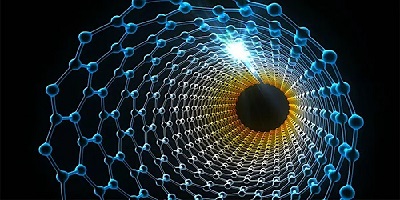Small and very useful
Publish date 25-10-2022
 "What is man in nature after all? A nothing compared to the infinite, a whole compared to nothing, something between nothing and everything. Infinitely far from embracing extremes, the end of things and their beginning are invincibly hidden from him in an impenetrable secret, and he is equally unable to see the nothingness from which he was drawn and the infinity from which he is swallowed " . Thus the philosopher and mathematician Pascal reminds us how the infinitely large and the infinitely small are the extremes in which human nature is most evidently manifested and, with it, the beauty of creation, its balance, its harmony and its mystery.
"What is man in nature after all? A nothing compared to the infinite, a whole compared to nothing, something between nothing and everything. Infinitely far from embracing extremes, the end of things and their beginning are invincibly hidden from him in an impenetrable secret, and he is equally unable to see the nothingness from which he was drawn and the infinity from which he is swallowed " . Thus the philosopher and mathematician Pascal reminds us how the infinitely large and the infinitely small are the extremes in which human nature is most evidently manifested and, with it, the beauty of creation, its balance, its harmony and its mystery.
With nanotechnologies we go down to the infinitely small! A nanometer is one billionth of a meter: to realize how small it is, just think that a sheet of paper is about 100,000 nanometers thick. When scientists began studying some materials at the nanoscale, they realized that they have unusual physical, chemical and biological characteristics compared to their macro counterparts. They have begun to know a world that follows different laws and properties than those present at higher magnitudes and appreciable by our eyes. This has opened up the possibility of studies and applications in many areas, from medicine to chemistry and energy, which go by the name of "nanotechnologies".
In the medical field they can be useful in various fields. In diagnostic processes, for example, some nanoparticles can recognize tumor cells at very early stages. Like special “flags”, the nanoparticles can adhere differently to the cells of sick patients than to those of healthy subjects. Special contrast media consisting of nanoparticles have been developed which, thanks to their characteristics and thanks to sophisticated technologies, can identify cancer cells with a precision never seen before. These technologies make it possible to delineate the margins of a tumor during surgery.
In the therapeutic field, studies concerning other applications can be found: it is possible to activate nanoparticles to increase the concentrations of free radicals in cancer cells causing their death, without involving healthy cells. An advantage related to the "nano" size is that these extremely small particles can cross barriers that are sometimes difficult to overcome, such as the vessel wall or the blood brain barrier, thus reaching target sites and transporting molecules for therapeutic purposes.
Many are studies only at an experimental level, but we know that this is the way to go to get to the news of science and medicine. The characterizing and unique aspect of nanotechnologies is that they are particles with dimensions such as to allow them to operate on the same level in which biological processes take place. In some ways it can be said that nanotechnologies are inspired by models and mechanisms present in nature. The cells, in fact, are operational centers that manage a complex traffic of "natural nanoparticles" containing genetic information, proteins or small molecules.
Valentina Turinetto
NP June / July 2022







